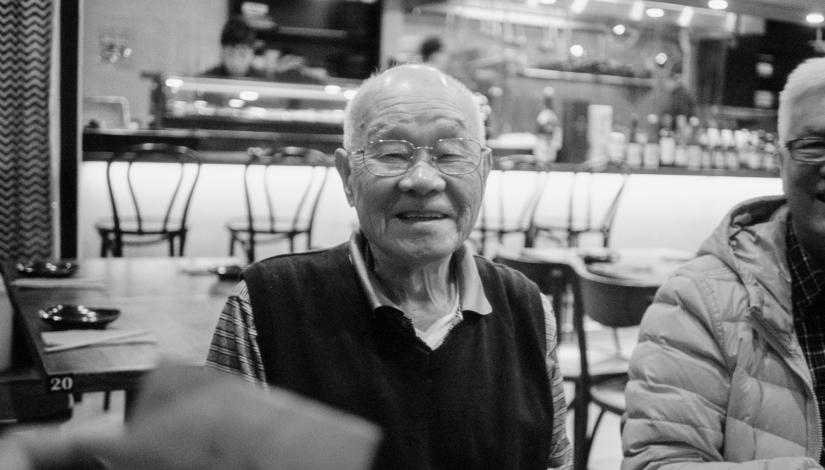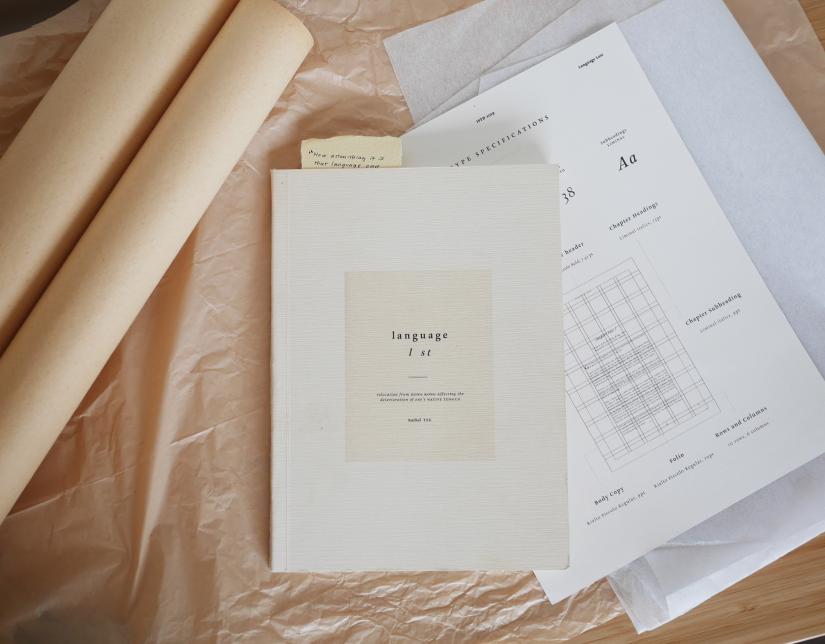When UTS Visual Communication student Rachel Tse started feeling disconnected from her Chinese heritage, she turned to her training in data visualisation to re-engage with her cultural identity.

Seeking connection
It wasn’t until Rachel Tse moved to Australia that she felt the connection to her Chinese roots beginning to fray.
Born and raised in Hong Kong, she completed her education in international schools mostly speaking English and studying a westernised curriculum.
While she spoke Cantonese, she felt disconnected from the language – “I always thought, I’m going to move somewhere else anyway. I don’t need Chinese; it doesn’t matter to me,” she says – but it wasn’t until she arrived in Sydney that she realised just how much that disconnection had cost her.
Losing a language is very much an emotional, psychological and sensitive process, but it’s also a quantitative one, so data visualisation seemed like an effective way to convey my ideas.
“I actually came here three years ago, and my grandpa who lived here didn’t speak English,” she says.
“I realised when I was speaking to him that I was using this broken Cantonese and I couldn’t really connect with him, and it just got really sad.”
The experience was the foundation of Tse’s final year Design Practice project, which was exhibited at the Faculty of Design, Architecture and Building’s end of year show. Called Language L st, the work – a book – used data visualisation to explore the deeply personal impacts of losing her native tongue.

Unable to speak the same language of her grandpa, Rachel Tse realised how much losing her native tongue had cost her.
Using data visualisation to explore language
Tse begun her process by digging out an old Cantonese essay from school that she’d written in her early teen years and recruited nine participants to read it. Three were born and raised in Hong Kong, three were born in Hong Kong but migrated to another country, and three were born and raised in a western country to Chinese parents.
Each participant was asked to circle the Chinese characters they recognised. Tse, who says she could barely understand the essay herself, then used the results to create a series of visual representations of the results.
What is data visualisation? As well as being a growing field in design, Rachel says it's "a visual strategy that uses the mapping of data values and information to understand patterns and data relationships."
Tse presented the first set of results a set of diagrams that charted the number of words understood by each group on a circular graph. The second was a recreation of the essay itself – for each group, Tse reproduced the Cantonese characters that participants had recognised and removed those they hadn’t. Those born and raised in Hong Kong had a strong understanding of the text, but for those who migrated to or were born in other countries, the loss of language was clearly visible on the page.
“When I read Chinese, there’s lots of skipping words, because I don’t know many characters, so I wanted to convey that feeling,” Tse says.
“As the book goes along, the letters break apart and at the very end the story is almost illegible.”
The Cantonese characters were printed in a font that was formerly used in Hong Kong signage but – in symbolic twist – is rapidly dying out. Tse also used a mix of paper types to create a tactile experience for the reader, and illustrated the book with black and white images of her homeland.
Drawing from the breadth of visual communication
Creating Language L st called on Tse’s three years of study in the UTS visual communication degree. She says that the degree introduced her to a huge range of design concepts, from data visualisation training and visual narrative to illustration, typography and storytelling, that helped her expand her own creative practice.
“Visual communication is so broad and so practical, which is why I love it,” she says.
“If you don’t know what you want to do, I feel like it’s such a great place to start.
“Within my cohort, we’re all graduating with the same degree, but everyone has such different skills – I like print design, but my friend does all this digital web media stuff and then another friend does coding.”

The Cantonese characters in Language L st were printed in a font that was formerly used in Hong Kong signage but – in symbolic twist – is rapidly dying out.
What’s next for Rachel Tse?
Now that she’s finished her studies, Tse says the next step will be starting to look for work as a graphic designer. For now, she seems content to stay put in Australia.
But even from a distance, the experience of making Language L st has pushed her to be more proactive about her own language and cultural connections – she now tries hard to speak Cantonese to her parents and relatives, rather than slipping back into the comfort and familiarity of English.
“I think they’re actually kind of shocked by it whenever I do!” she says.
Learn more about the UTS Bachelor of Design in Visual Communication.

